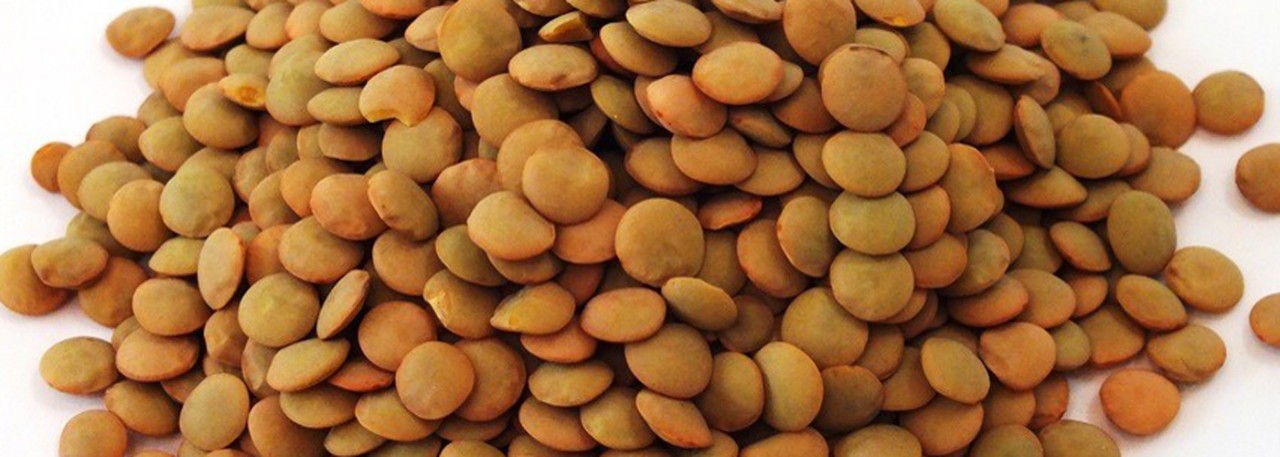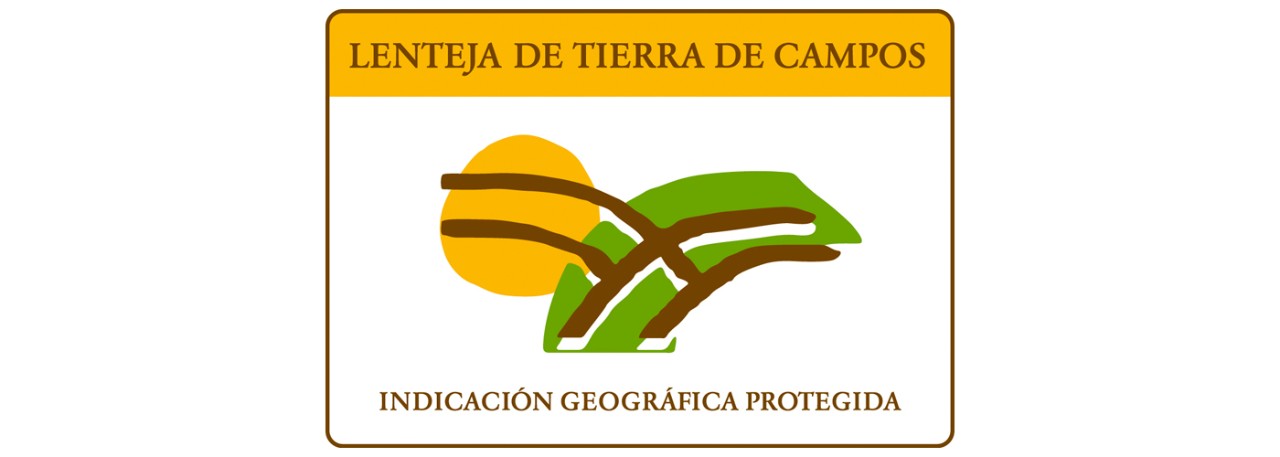.png.transform/rendition-xs/image_image%20(1).png)
Lenteja de Tierra de Campos PGI
Seeds of the species Lens culinaris ssp. Culinaris, sub-species microsperma, group Europeae, grown for human consumption under the commercial name Pardina.
Tasting notes
The lentils have a smooth skin, and both skin and albumen are slightly soft. The albumen is moderately creamy, not very grainy or floury. Only slightly astringent.
Other notes
The plants must be local ecotypes that have adapted over the years to the agricultural and climatic conditions of the area, or commercial varieties obtained from these ecotypes. They are robust, resistant to most pests, tolerant to disease, adapt well to drought and produce average yield.
Physical and morphological characteristics: The outside skin is brown or dun-colored with black mottling or marbling, which may cover the whole lentil. The cotyledons are yellow. Minimum size is 35 mm / 1/8 in, although up to 4% of smaller lentils are allowed.
Minimum fat content: 0.9%.
Production / Processing method
The lentils are grown on soil having the following characteristics: organic matter 0.7 %, phosphorus (p2o5) 10 mg/kg, potassium 100 mg/kg, average altitude 850 m / 2,778 ft above sea level.
They are an alternating crop. Irrigation is allowed when necessary to guarantee emergence and when the Regulatory Council acknowledges a situation of water shortage. Tillage clears weeds, provides a flat growing surface and the right structure for good germination. No-till farming is allowed.
Phosphorus and potassium-based fertilizers are applied when minimum levels are not reached. Organic fertilizers may only be applied during the year before sowing.
Sowing takes place from 15 October to 15 April, with 75-100 kg / 165 -221 lb of seed per hectare / 2,471 acres. Authorized plant health products may be used.
The lentils are harvested when the plant is physiologically mature and the grain moisture content is below 13%. If the harvested product contains more than 6% impurities or moisture over 14%, pre-cleaning takes place immediately after harvesting and before storage.
During storage, anti-weevil treatment is given during the first ten days after harvest, unless the product is taken during that period for packing. Storehouses must be clean, dry, in good repair and properly aired. Lentils must be stored away from other products, different batches may not be mixed, and they must be kept away from any materials that might contaminate them.
The following processes are carried out in the packing establishments in the following order:
- Quality control on entry, to standardize the different batches.
- Cleaning and removal of foreign bodies by pre-cleaning using sieves and blowers.
- Anti-weevil treatment during the first 10 days after harvesting, if not already treated during storage.
- Sifting and sizing.
- Removal of defective grains by densimetry.
- Packing in packs weighing 1 kg / 2.2 lb (or 10 kg / 22 lb for large packs).
- Final quality control of packs and product.
- Affixing of back labels issued by the Regulatory Council, showing the year of harvest.
The lentils may be pre-cooked in registered pre-cooking plants, which shall undertake the following operations in the following order:
- Soaking in water for a minimum of two hours.
- Blanching in water at 85-95º C / 185-203ºF for a minimum of 6 minutes.
- Removal of any foreign bodies.
- Packaging and addition of canning liquid comprising water, salt (2.5 to 3.5 %) and anti-oxidants.
- Sealing and sterilization of cans at a minimum temperature of 110ºC / 230 ºF.
- Labeling with the Regulatory Council back label showing the year of harvest.
Dry lentils must be sold during the period between harvesting and 30 September of the following year. This period may be extended once by up to six months.
PGI lentils may not be sold in bulk. They must be classified as Extra as defined in the quality regulations for certain dry and peeled dry pulses that are packed and sold on the domestic market (Order 16 November 1983) or the equivalent category in any subsequent regulations. Pre-cooked, canned lentils must be classified as Extra as defined in the quality regulations for vegetable preserves (Order of 21 November 1984) or the equivalent category in any subsequent regulations.
Geography / Relief and climate
The characteristics of these lentils stem from natural factors, basically the environmental conditions in which they are grown (climate, soil and altitude). The pardina lentil comes from local ecotypes that have been grown in the area for many years so have adapted to become resistant to drought, pests and disease.
The local climate is arid or semi-arid, with average rainfall of 464 mm per year, an average minimum temperature of -9ºC/ -48ºF and an average maximum temperature of 18.6ºC / 64ºF. The coldest month is January and the warmest is July. The period of frost lasts for almost eight months, and the rainiest months are May and November. There are therefore good moisture conditions for germination during the usual sowing period (November), for grain formation (the following May) and for fast, efficient drying of the grains during June and July, when temperature and sunshine are favorable as they coincide with the summer solstice. This helps avoid the formation of fungi and bacteria during storage. The low winter temperatures also help achieve natural pest control.
The soils in the area of Tierra de Campos have a high clay content, neutral or alkaline pH, low organic content, normal values for potassium and slightly low values for phosphorus although higher than in surrounding areas. In order to obtain an organoleptically acceptable product, there are minimum requirements in the soil for organic matter (to give a less floury product), potassium (creamier, less astringent lentils) and phosphorus (softer, less astringent skin and more fat).
Regulatory Council
Consejo Regulador de la IGP Lenteja de Tierra de Campos
C/ Venecia 6
47680 Mayorga (Valladolid)
Castilla y León
Tel: (+34) 983 751 221
igp@lentejadetierradecampos.es
www.lentejadetierradecampos.es
Sources:
- Spanish Ministry of Agriculture
The outside skin is brown or dun-colored with black mottling or marbling.


- Lenteja de Tierra de Campos 1
- Lenteja de Tierra de Campos 2

Mayorga (Castile-Leon)
